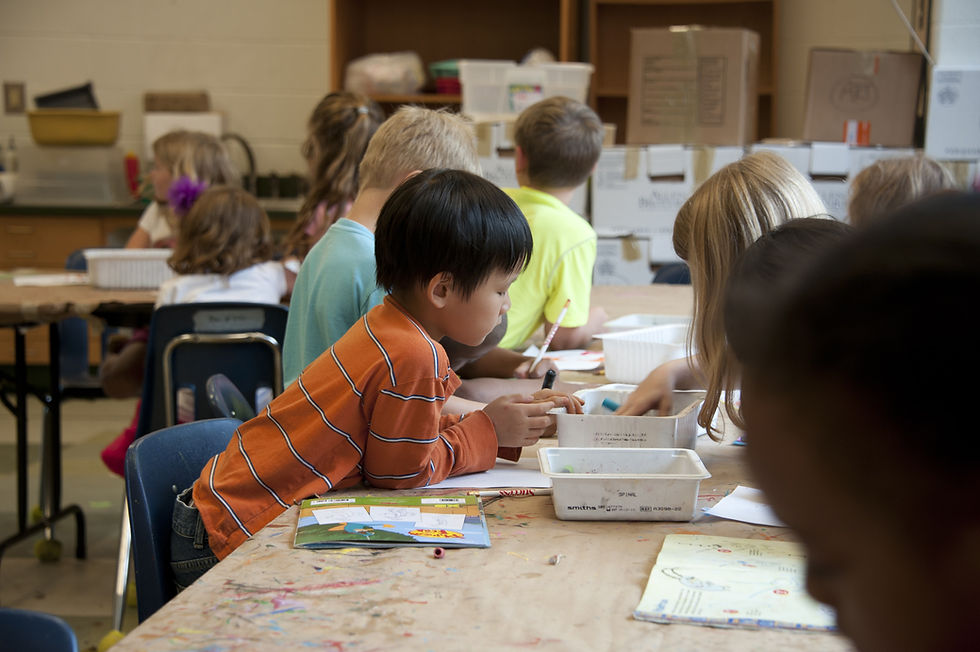How to use group work in your ESL classroom
- DestinationTEFL
- Aug 3, 2021
- 4 min read
Group work may take a little more planning as a teacher, but the benefits are clearly visible, if utilised correctly. The purpose of doing group work is to build confidence, give learners a less threatening environment to express themselves in, learn from peers, and build community.

Often the dilemma facing a teacher who would like to try group work is how best to group their students.
Here are some tips from our academic director and trainers at Destination TEFL
A mixed level class could be put into groups of the same ability, and the same task gets adapted to suit the different group levels – in other words, the activity is scaled up or down according to ability. The class feels that they are all doing the same task, however, those students who are more advanced are challenged with an activity that is upscaled to their level, and those of a lower level can still participate and improve their skills.
OR, the teacher could purposely put mixed levels together, so that stronger students can help more challenged students as we learn well from peers, and peer teaching helps to reinforce a concept for the student teaching it to their peers.
For group work, good classroom management skills do come into play. The teacher needs to ensure that everyone is participating. In the classroom, it’s good to mix up activities with a combination of group work, pair work and individual tasks, as it reflects real life and prepares the students for a work environment where they will sometimes have to work individually as well as in teams.
For group work, a pyramid activity can work well, where students do the task individually and then pair up and reach a consensus, and then the teacher puts pairs together into groups. Each time the task is repeated until it is the whole class. This allows students to recycle and reuse the taught language over and over, building their confidence.
Try to get your students out of their seats often by use of pacemakers and brain breaks. Invite students to work with new people, and not always the same partners, to create a community and to make friends.
During our Destination TEFL course, we use many of these ideas when training our TEFL students. We find that using the techniques that we want our trainees to use as TEFL teachers, allows them to see the activities from the students’ perspective and they learn by doing rather than being lectured to. An example of how we use group work during our TEFL course, is when we teach about Asian culture. Bearing in mind that in this case, our students are native English speakers, not ESL students, however, the same principles and techniques apply:
In our culture lesson, we set up stations around the classroom with mini-articles on aspects of Asian culture. Trainees spend 30 seconds at each station to match a title to an article. There is then another round where they spend 3 minutes at each station to answer more specific questions about the article and the aspect of culture it refers to. Then in groups they create their own presentation on a culture topic and the task sheet as a group. Then they do it as a listening skills lesson where the group reads their summary, presenting it to the class and the rest of the class answers questions.

Here are some suggestions on how to repair and regroup students in order to mix them up:
‘Mingle-mingle’ gets students out of their seats and interacting using one of the following ideas below. During this time, encourage them to use English, rather than their home language. Choose an idea based on your class’s age and language level.
Uno cards – each student gets a card, and they look for the person with the card that added to theirs equals 10.
Puzzle pieces – they look for the person/people whose pieces complete their puzzle
Collocations – each person has half a collocation daily/newspaper, sports/arena, etc.
Verbs – each person has either the V1, V2 or V3 of the same base verb and they have to find the other people who complete the set.
Chocolates – each person gets a bar of chocolate and they find others with the same chocolate. Stickers or ink stamps work well too.
Colours/Shapes/Animals/Emotions – each student is given a coloured square and they need to find the other people with the same colour, shape, animal, etc.
Parts of Speech – each person is given either the name of a part of speech or the part of speech and they have to find their match.
Tenses – same as with parts of speech but with the tense name and an example sentence.

Some fun ideas to get students lining up for an activity – line up based on:
Mobile phone battery percentage
Birthday
How far they live from school
How many of something they have, or have done that day (steps walked today, coins in your pocket, cups of coffee had today, etc)
We do hope that you will try to incorporate more group and pair work into your lessons. A little more effort on your part will reap rewards both on a learning and fun level.
Guest blog written for Richard James Rogers by Rose-Anne Turner – Destination TEFL
















Commenti